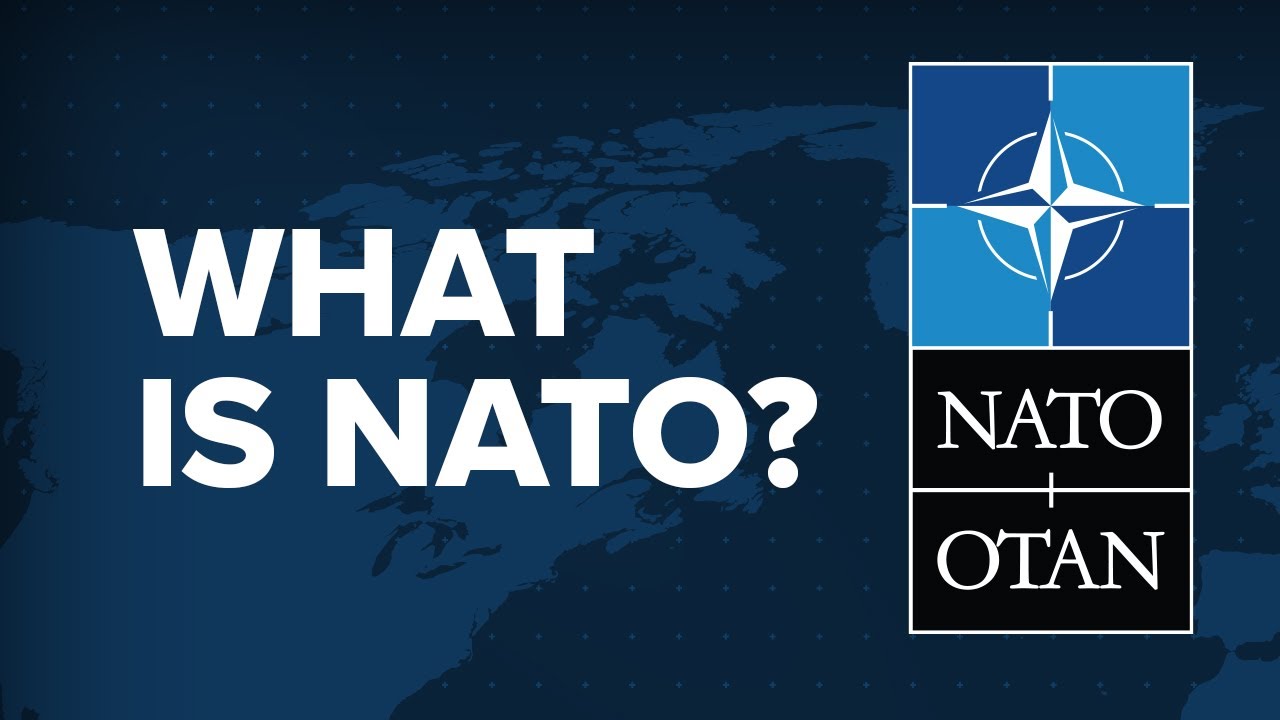NATO - Summary on a Map
Summary
TLDRThis historical overview details the inception and evolution of NATO, from its formation in response to post-WWII Soviet influence to its modern role in global security. It chronicles NATO's expansion, key conflicts, and adaptations, including the Cold War, the Balkans crisis, war on terror, and recent tensions with Russia. The narrative underscores NATO's significance in maintaining peace and addressing emerging threats, shaping the political landscape of the 20th and 21st centuries.
Takeaways
- 🌍 The post-WWII world saw the rise of the USSR and the USA as superpowers, leading to a divided Europe under the influence of these two entities.
- 🇨🇿 The 1948 coup in Czechoslovakia heightened Western fears of Soviet expansion, prompting the formation of defensive alliances.
- 🇩🇪 The US, UK, and France united their German occupation zones to create a democratic bulwark against Soviet influence.
- 🔒 The Iron Curtain symbolized the division of Europe, marking the onset of the Cold War.
- ✅ The North Atlantic Treaty, signed in 1949, established NATO, a military alliance with collective defense as its core principle.
- 💥 The Soviet Union's first atomic bomb test in 1949 escalated the arms race and Cold War tensions.
- 🇰🇵 The Korean War (1950-1953) saw the first major conflict of the Cold War, with the USSR-backed North Korea invading South Korea.
- 🇫🇷 France's opposition to West Germany's rearmament led to the proposal of a European army, which would be part of NATO.
- 🔄 NATO's expansion included Greece and Turkey in 1952, and later Spain in 1982, reflecting its growing role in European security.
- 🇫🇷 President de Gaulle's policy led to France's temporary withdrawal from NATO's integrated command, highlighting tensions within the alliance.
- 🏰 The end of the Cold War did not dissolve NATO; instead, it adapted to new global challenges, including humanitarian missions and stability operations.
Q & A
What event at the end of World War II led to fears of Soviet influence spreading in Western Europe?
-The coup d'état in Czechoslovakia in February 1948, orchestrated by the Communist Party and supported by the Soviet Union, led to fears of Soviet influence spreading in Western Europe.
Why did France, the United Kingdom, and the United States unite their occupation zones in Germany after World War II?
-They united their occupation zones to create a democratic German state that would block Soviet influence and act as a buffer against communism.
What was the primary purpose of the Marshall Plan offered by the United States to Europe?
-The primary purpose of the Marshall Plan was to accelerate reconstruction in Europe and stem the spread of communism.
What is the significance of Article 5 in the North Atlantic Treaty, signed on April 4th, 1949?
-Article 5 ensures the collective defense of NATO member countries, stating that an armed attack against one or more of them shall be considered an attack against them all.
Why did the United States fear a Soviet attack on West Germany during the Korean War?
-The United States feared a Soviet attack on West Germany because West Germany was not a member of NATO, had not been allowed to rearm since the end of World War II, and was vulnerable while the US was heavily involved in the Korean War.
What was the role of NATO during the Bosnian War in the 1990s?
-NATO enforced a no-fly zone over Bosnia-Herzegovina and engaged in its first combat by shooting down Serbian planes, later conducting bombing campaigns against Bosnian Serb forces until a peace treaty was signed.
Why did France decide to leave NATO's integrated command during the 1960s?
-President Charles de Gaulle of France opposed US dominance within NATO and decided that France must leave NATO's integrated command while remaining a member of the alliance.
How did NATO's role evolve after the end of the Cold War?
-After the Cold War, NATO adapted to the new global environment by expanding its mission beyond defense to include humanitarian interventions and ensuring stability in Europe.
What was the first instance where NATO invoked Article 5 after the September 11, 2001 terrorist attacks?
-NATO activated Article 5 for the first time, committing to the fight against terrorism, which included sending military aircraft to patrol US skies and deploying a naval force to the Mediterranean Sea.
What was the context of NATO's intervention in Libya in 2011?
-NATO intervened in Libya during the Arab Spring, officially to protect civilians, and conducted bombing campaigns, including on Sirte where Muammar Gaddafi had taken refuge.
Outlines

Cette section est réservée aux utilisateurs payants. Améliorez votre compte pour accéder à cette section.
Améliorer maintenantMindmap

Cette section est réservée aux utilisateurs payants. Améliorez votre compte pour accéder à cette section.
Améliorer maintenantKeywords

Cette section est réservée aux utilisateurs payants. Améliorez votre compte pour accéder à cette section.
Améliorer maintenantHighlights

Cette section est réservée aux utilisateurs payants. Améliorez votre compte pour accéder à cette section.
Améliorer maintenantTranscripts

Cette section est réservée aux utilisateurs payants. Améliorez votre compte pour accéder à cette section.
Améliorer maintenant5.0 / 5 (0 votes)






